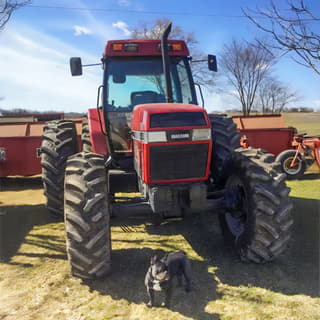INTERESTING IRON
Why the John Deere 4430 was so important to “modern agriculture”…
Ryan Roossinck
January 15, 2025
I don’t know about you, but when I think of the term “modern agriculture” in terms of tractors, 1973 is the year that sticks in my mind. Mainly, I say this because that’s the model year when the John Deere 4430 (and the rest of the Generation II tractors) showed up on dealer lots. I think they were one of the most gamechanging tractor lines in the company’s history. But was it just dumb luck, or is there more to it?
Personally, I think there was more to it.
The changing needs of the farmer
As farming in America expanded very rapidly in the late 60s and into the 70s, the needs of the farmer changed. They were planting more acres than ever before. That meant spending more time bouncing around on an open station tractor, which takes its toll on the body. Not in the sense of coming home bruised and battered, but a long day in the field just wears you out, y’know? And when farmers get tired, that’s when accidents happen.
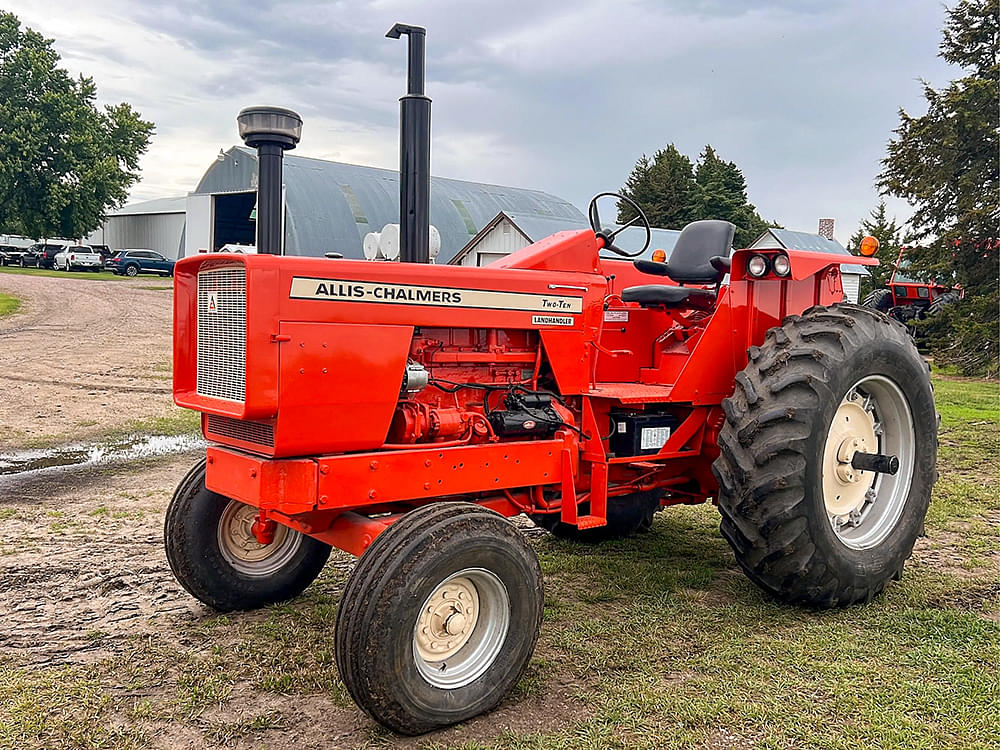
I mean, sure, there were aftermarket cabs available (as well as a few in-house options depending on the manufacturer). However, from where I’m sitting, those were an afterthought. They were typically pretty crude, cramped, and drafty. Yes, it kept you out of the elements, so they were better than nothing; at the end of the day, though, they were just a metal box with windows. They knocked the sound down a little bit, but not by much. Even the in-house options left a lot to be desired.
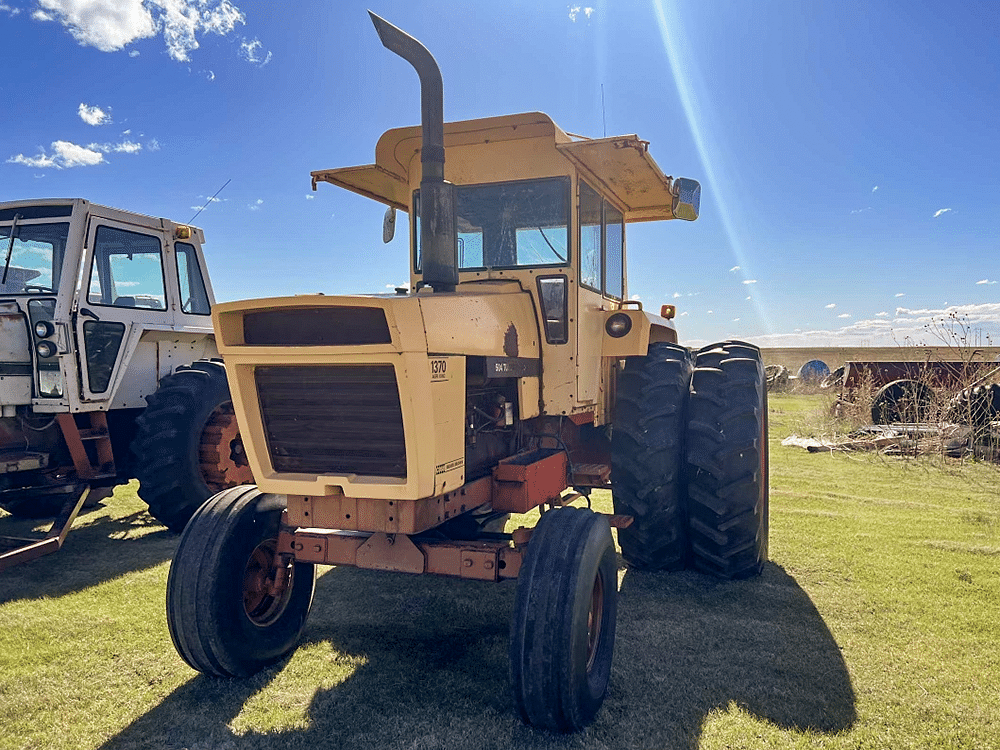
John Deere saw the then-current state of affairs, and knew it was a problem that needed addressing. So, when they began development of the Generation II tractors, they put two objectives higher on the priority list than anything else; operator comfort and safety. It wouldn’t be easy to meet the goals, but it could be done. It would just take some out of the box thinking.
Re-inventing the tractor…
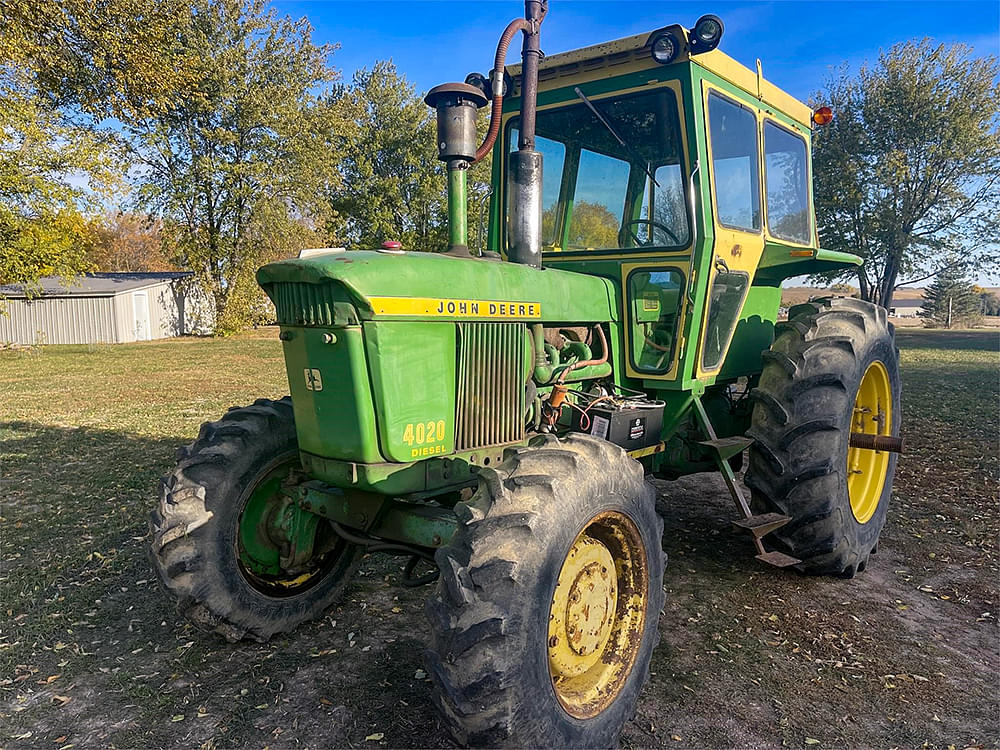
Actually, it wasn’t out of the box thinking. It was more like “throw away the box” thinking – at least where the priorities were concerned.
That’s what the engineers in Waterloo did, too. For lack of a better way to say it, John Deere built the tractor around the cab, not vice versa. From the frame up, the Generation II tractors were engineered with a cab in mind. The SoundGard cab was built to be an integral part of the tractor – an industry first, as far as I know. Bushings under the cab provided isolation from the vibration and heat buildup from the engine. Foam rubber door and window seals kept the dust at bay and use of sound-deadening upholstery knocked the noise down to manageable levels.
It wasn’t just that, though; engineers were challenged to create a cab that would comfortably accomodate 95% of the population. It wasn’t easy, but they did get it done. I’m living proof. I’m 6’6″ and built like an offensive lineman (ok, an offensive lineman who hasn’t been in the gym in a while…), and I’m quite comfortable in a SoundGard!
Did they hit the goal?
In my opinion, yes. When the Generation II tractors were launched, they reinvented the market’s vision of a tractor. Nobody had seen anything like it. It was so different that the Marketing team refused to use the term “cab” when talking about these machines. It wasn’t the SoundGard cab; it was a SoundGard body. Go check out old brochures and print advertising from the 70s sometime!
Was it a gamble? Absolutely. Farmers aren’t typically the first to jump on a bandwagon or a trend, and I’m sure that Deere was worried about that. They’d invested a ton of time and money into developing them, and I’m nearly certain that they were among the most expensive machines to build as well. If the line turned out to be a flop, it would be a major setback. However, it didn’t take long before farmers started to realize that these machines were different – in a good way.
The Generation II tractors – and specifically the 4430 – were a runaway sales success.
Here’s a sales stat that’ll blow your mind. As far as I know, Deere has never officially published total production numbers for the 4430, but the first one was serial number 1000. The latest serial number I’ve ever heard of is 79045, so in the unlikely event that that’s the very last one, that means that there were 78,045 tractors built. If you crunch the numbers on sales over the five-year production run, John Deere sold a 4430 every 34 minutes on average from 1973 through the end of 1977.
One 4430 was sold every 34 minutes. Of every day. Of every year. For five years straight.
Let that marinate for a bit.
Anyway, let’s take a look at a couple 4430s selling at auctions next week, shall we?
The one in Iowa…
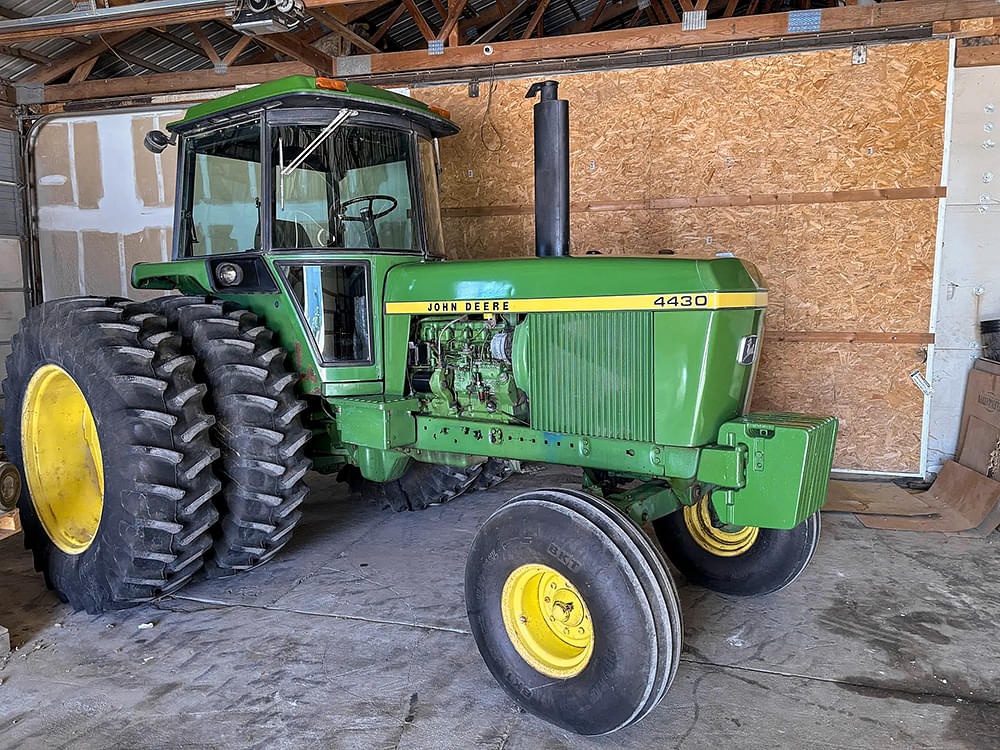
From what I gather, this John Deere 4430 in Woodbine, IA is a one-owner machine being sold on an estate auction. Based on what I can tell, it’s a cream puff. It’s only got 3975 hours on it. It’s taken three tachs to get there, but it’s all been pretty well-documented, and the tachs and records go with the tractor.
As far as 4430s go, it’s a fairly run of the mill tractor. Dual remotes, dual PTO, quad range, and a (nearly) full front weight rack. In 1977, that was enough to be a very good primary horse. However, based on the hours and wear (you can check out the rest of the photos here), I’d say that this one must have been the secondary (or maybe even third) tractor on the farm.
The paint (which I believe is original) has quite a bit of shine to it, so I don’t believe this one spent many nights outside. It’s got fresh rubber all the way around as well. Overall, it’s very clean inside and out!
The one thing I really like about this tractor is the documentation. It comes with all of the original paperwork – owner’s manual, window sticker, the works. For a tractor that’s close to 50 years old, that’s pretty rare. On that same note, the fact that the oil changes are all recorded on masking tape on the inside of the toolbox lid made me smile too. I like that kind of stuff.
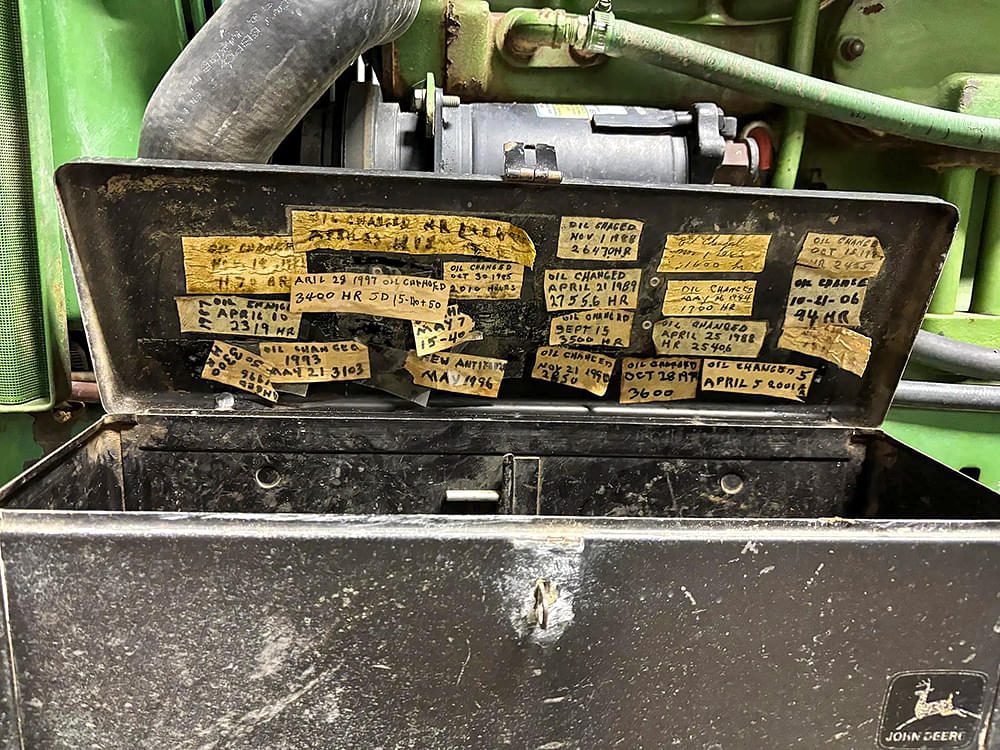
The one in The Mitten…
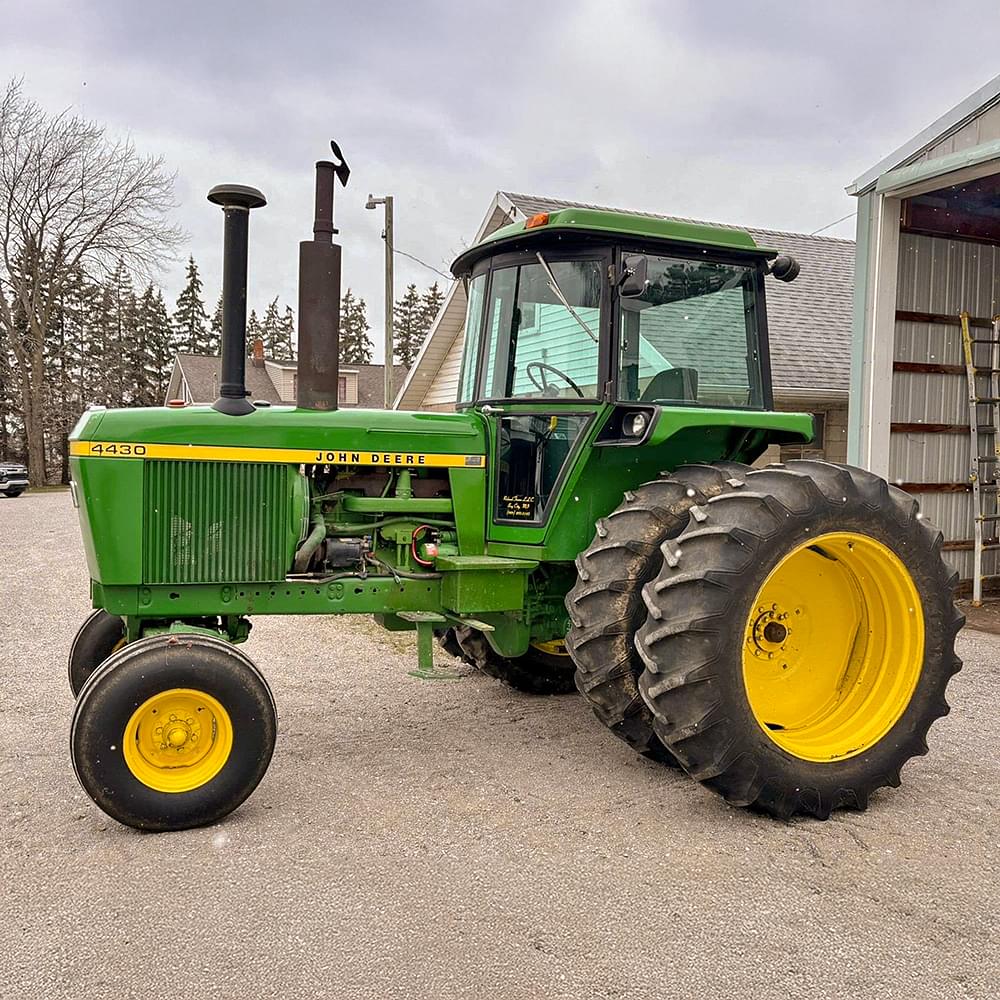
Every now and again, a low-houred original 4430 pops up on the auction market. However, it’s been a while since we’ve seen a sub-3000 hour tractor. I believe the last one was back in June of 2023 when the guys from Ulmer Auction sold one with 2088 hours for close to $44K. We were due for another one!
This one currently lives in Bay City, and it’s only got 2456 actual hours on the meter. It’s a nice example of a Michigan tractor, too; 16.9-38 duals (maybe spaced for vegetables or sugar beets), dual remote and PTO, and a Quad Range transmission. All-original paint, and it’s very clean!
Bidding wraps up on this machine on January 22nd.
Wrapping up…
With commodity prices being where they are right now, I don’t see these two being record-setters. However, I do think they’ll both bring reasonably strong money. The Michigan tractor could potentially get into the low-mid $30K range, and with the Iowa tractor being as well-documented as it is, I think it could potentially hit $30K as well. There’s precedent for it; back in November, the team at Wheeler Auctions sold a one-owner 4430 with 3900 hours on it for $30K on the nose.
My guess, and this is purely conjecture on my part, is that both of these tractors will end up going to work rather that into a collection. It might be really light-duty work, but in my experience, most SoundGard collectors are looking for the lowest hours possible. I could easily be wrong on that, but that’s my gut feeling on these two. Either way, working or not, I’m certain they’ll be somebody’s pride and joy!
Make it a great week, my friends!



















